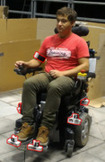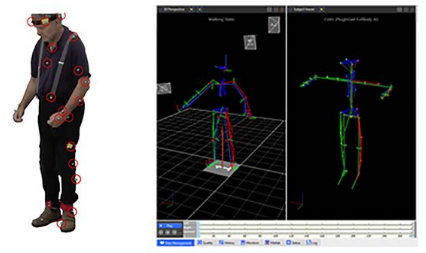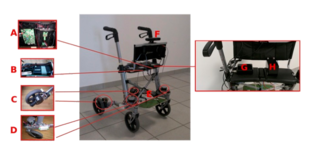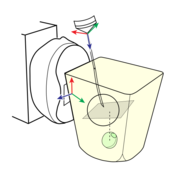People with severe disabilities often rely on power wheelchairs for moving around. However, if their driving abilities are affected by their condition, driving a power wheelchair can become very dangerous, both for themselves and the surrounding environment. This paper proposes the use of wearable vibrotactile haptics for wheelchair navigation assistance. We use one or two haptic armbands, each composed of four evenly-spaced vibrotactile actuators, for providing different navigation information to power wheelchair users. With respect to other available solutions, our approach provides rich navigation information while always leaving the patient in control of the wheelchair motion. Moreover, our armbands can be easily adapted for different limbs and can be used by all those patients who are unable to safely maneuver a kinesthetic interface. The results of two human subjects studies show the viability and effectiveness of the proposed technique with respect to not providing any environmental cue. Collisions were reduced by 49% when using the vibrotactile armbands. Moreover, most subjects expressed a preference for receiving haptic feedback and found the armbands comfortable to wear and use.
@article{DeAgBiBaTeCaSpPaBa20-TOH2020,
Title = {{Power wheelchair navigation assistance using wearable vibrotactile haptics}},
Author = {Devigne, Louise and Aggravi, Marco and Bivaud, Morgane and Balix, Nathan and Teodorescu, Stefan and Carlson, Tom and Spreters, Tom and Pacchierotti, Claudio and Babel, Marie},
Journal = {{IEEE Transactions on Haptics (ToH)}},
Publisher = {{IEEE}},
Pages = {1-6},
Year = {2020},
Month = Jan,
DOI = {10.1109/TOH.2019.2963831}
}



